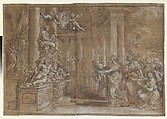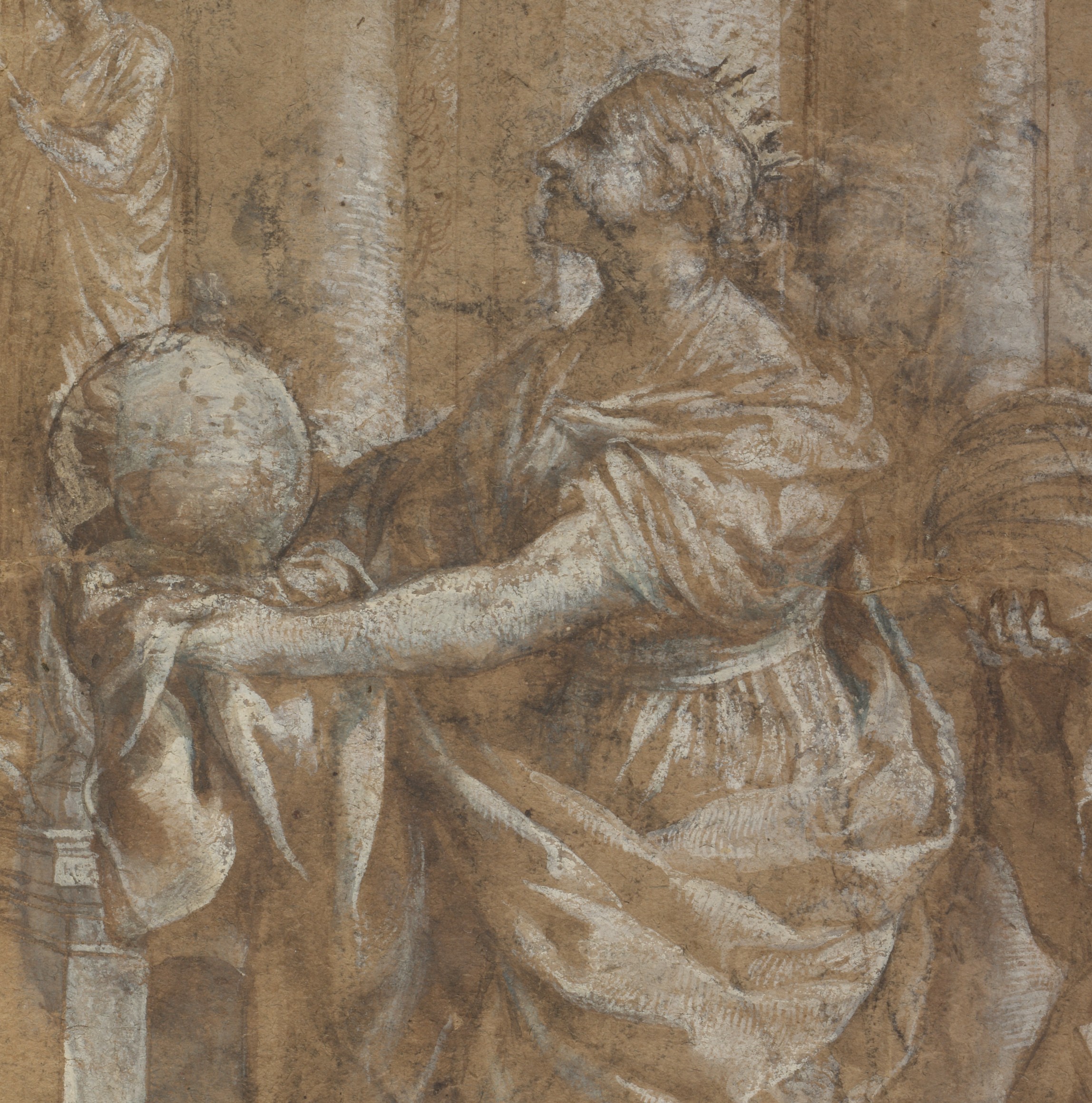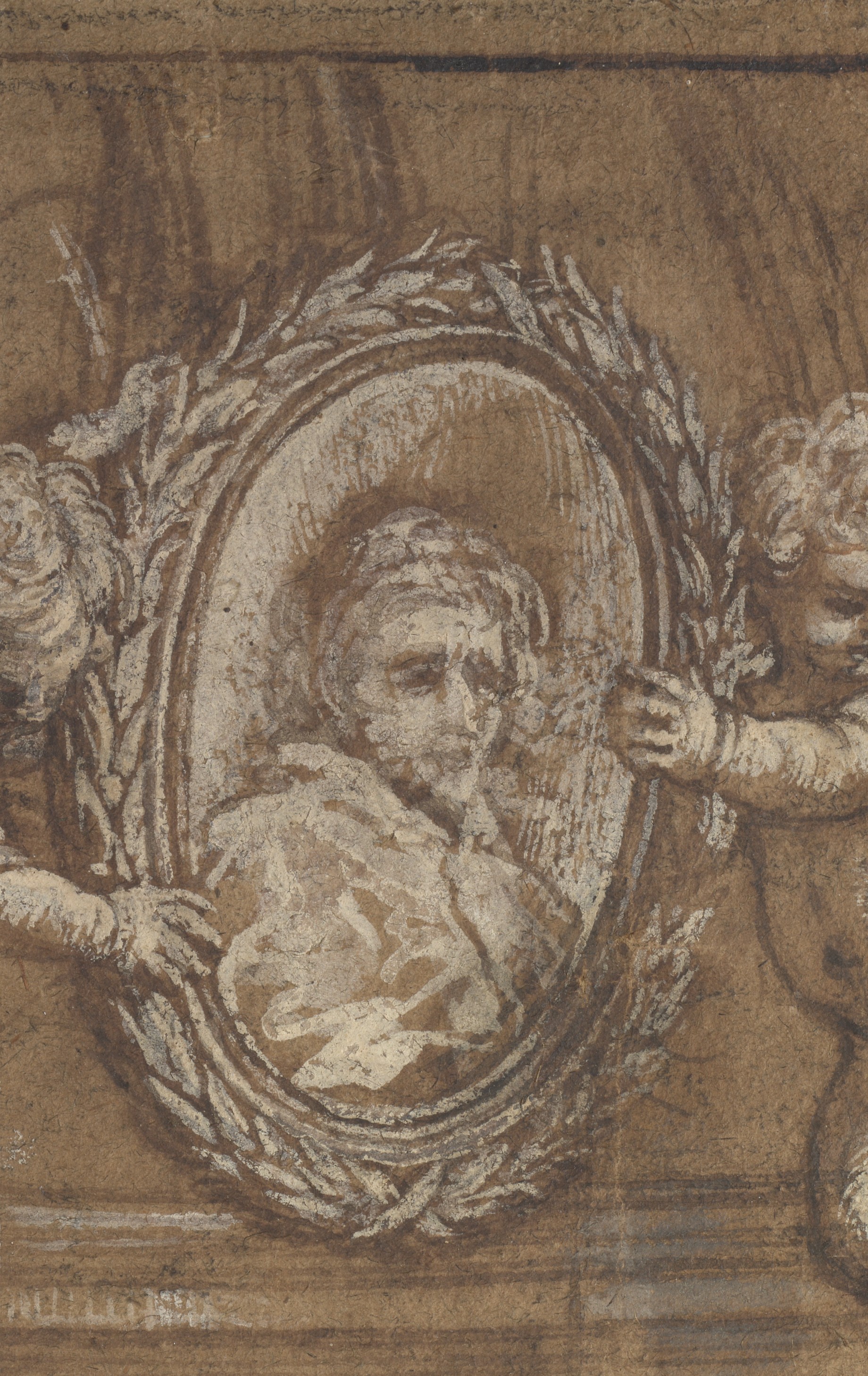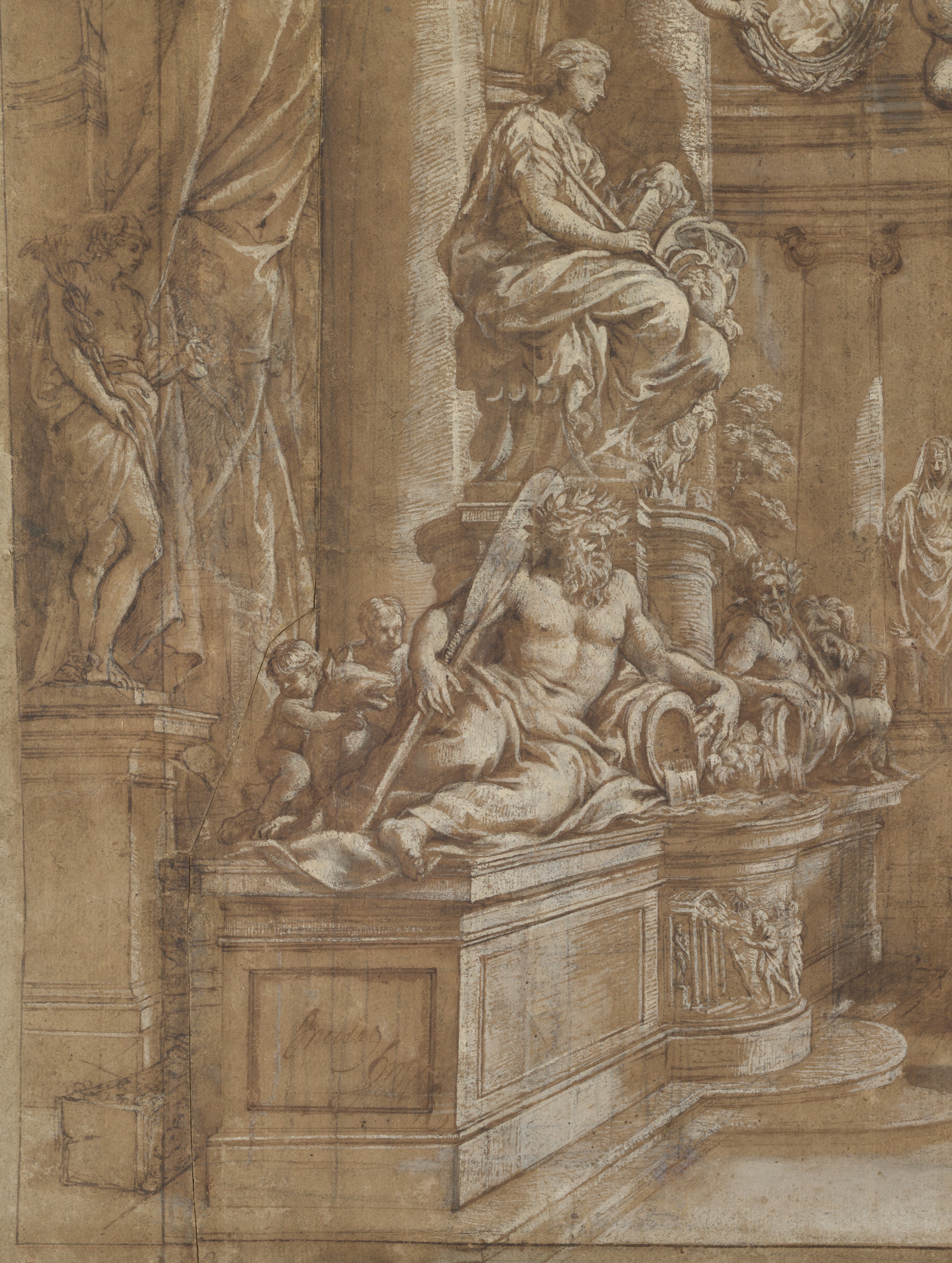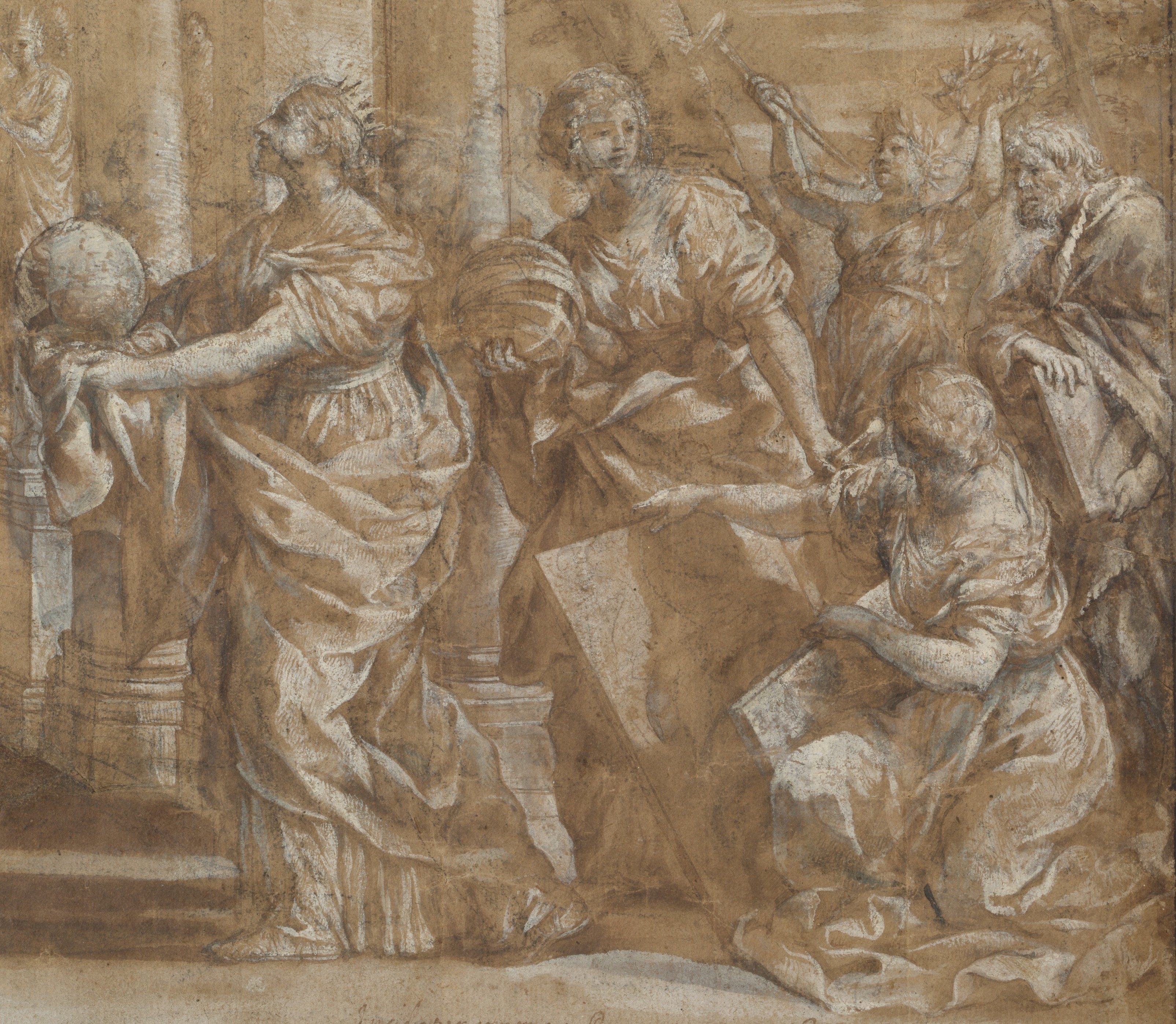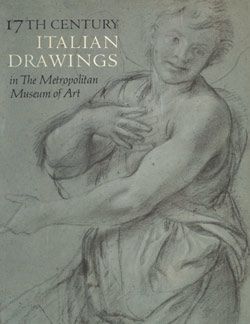Design for a Thesis Print with an Allegory of Knowledge and Portrait of Cardinal Antonio Barberini the Younger (1607–1671)
Pietro da Cortona (Pietro Berrettini) Italian
Not on view
As scholar Louise Rice has identified, this highly finished drawing was preparatory for the image portion of a thesis print of 1635, designed by Pietro da Cortona and engraved by the German printmaker Theodor Matham. Seventeenth-century thesis prints were published as part of a broadside, or booklet, which served to communicate and celebrate a student's public defense of a series of theses (or conclusions) on a philosophical, theological, or legal subject, done in person in front of three examiners. The thesis broadsides consisted of three parts: an image, a preface or dedication, and the detailed text of the dissertation on the subject. The image portion often depicts a composition based on allegorical, emblematic, and heraldic elements, usually allusive to the patron or sponsor of the student. As Rice notes, the particular thesis print connected to Cortona's drawing was produced to commemorate the defense in Philosophy by Giovanni Battista Labia, a young Venetian nobleman, at the Collegio Clementino in Rome. Below the image, the text portion in the print bears a dedicatory preface to Labia's sponsor, the powerful Cardinal Antonio Barberini The Younger (1607-1671), while the long text of the dissertation in the following pages examines 140 conclusions on topics in Aristotelian philosophy. See Louise Rice, "Pietro da Cortona and the Roman Baroque Thesis Print," in Pietro da Cortona: Atti del convegno internazionale, Roma-Firenze, 12-15 novembre 1997, ed. by Christoph Luitpold Frommel and Sebastian Schutze, Cinisello Balsamo (Milan), 1998, pp. 189-200.
As seen in Cortona's dynamic drawing, the image portion of a thesis print often depicts a composition based on allegorical, emblematic, or heraldic elements, usually allusive of the patron, or sponsor, of the student. Cardinal Barberini's portrait appears in the oval picture supported by flying putti, at the top of the composition. Below at left, a female figure sits on a pedestal presiding the scene. According to Karl Noehles, she is the "Sapienza-Minerva," an allusion to Minerva goddess of Wisdom, the "Magna Mater,"’ and the personification of Rome. The reclining allegorical figures of the two rivers, the Tiber (with Romulus and Remus) and the Arno (with the Florentine lion, or marzocco) symbolize the Tuscan past and Roman present of the Barberini family, whose arms appear on the shield above. In this Temple of Wisdom are statues of Mercury, because all forms of knowledge and art necessitate the power of his eloquence. The female figures represent the virtues. The figures at right in the composition carry scientific instruments, which are more clearly identifiable in the engraved thesis print: the crowned woman leading the procession holds a celestial sphere, her follower bears an armillary sphere, the kneeling woman holds tablets annotated with maps of the earth, while the old man holds a tablet bearing what appear to be the measurements of a column. Behind them stands Fame, holding a trumpet and a laurel crown.
This large drawing consists of two sheets joined vertically somewhat to the left of center. The white highlights employed in the two sections differ: those on the right are softer, and those on the left harder. The wing and the legs of the flying putto projecting over the vertical seam have been reworked in the whites used otherwise only in the left section. It is possible that, the client or ecclesiastical censor having found the original left section of the design unsatisfactory, cut it off, and had a new solution integrated. The joining of the two sheets would have been smoothed over by the reworking of the putto in the white used in the new left half. Such a revision and reconsolidation of the design would account for the presence of the ecclesiastical permissions to engrave that appear at both lower left and lower right.
Volkmar Schauz discovered and published in 1978 a lively, small preparatory sketch for the Allegory in Honor of Antonio Barberini that differs in many particulars from Cortona's final composition (for this drawing, see Jörg Merz 2005, pp. 54, 450 n. 135, fig. 45: private collection, southern Germany, red chalk, 15.4 x 19.5 cm).
This image cannot be enlarged, viewed at full screen, or downloaded.
This artwork is meant to be viewed from right to left. Scroll left to view more.
